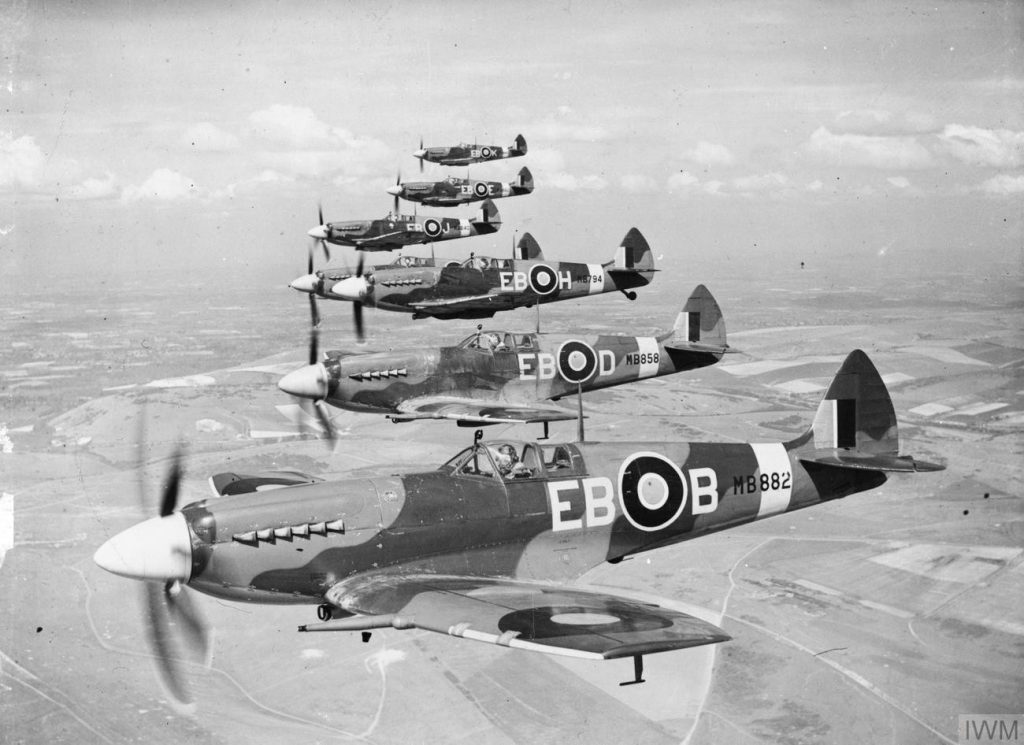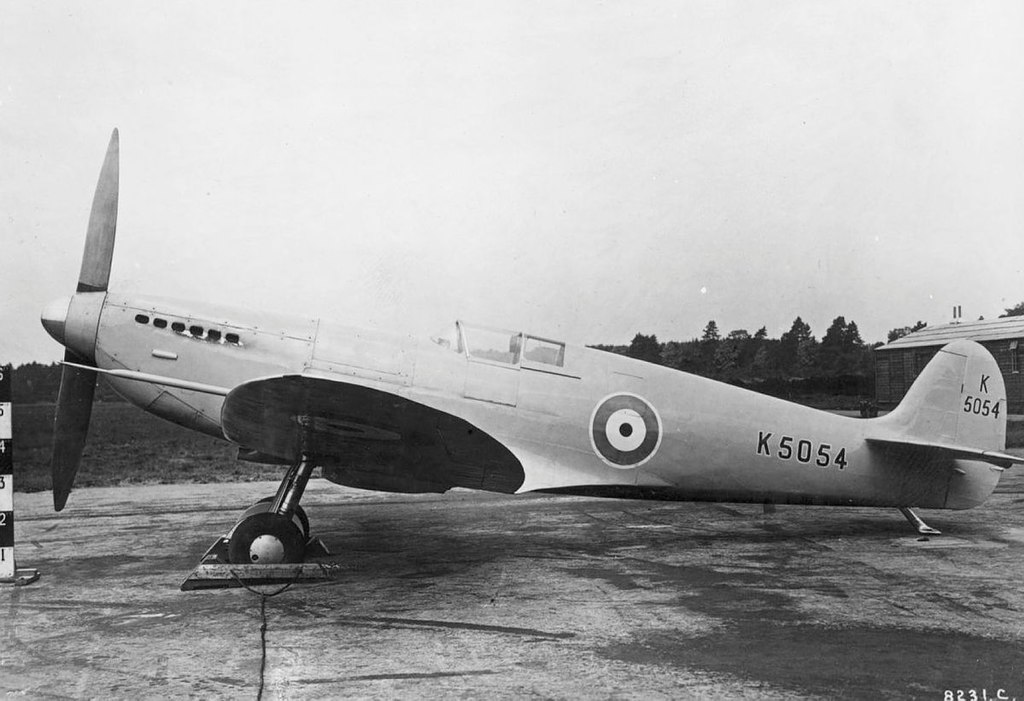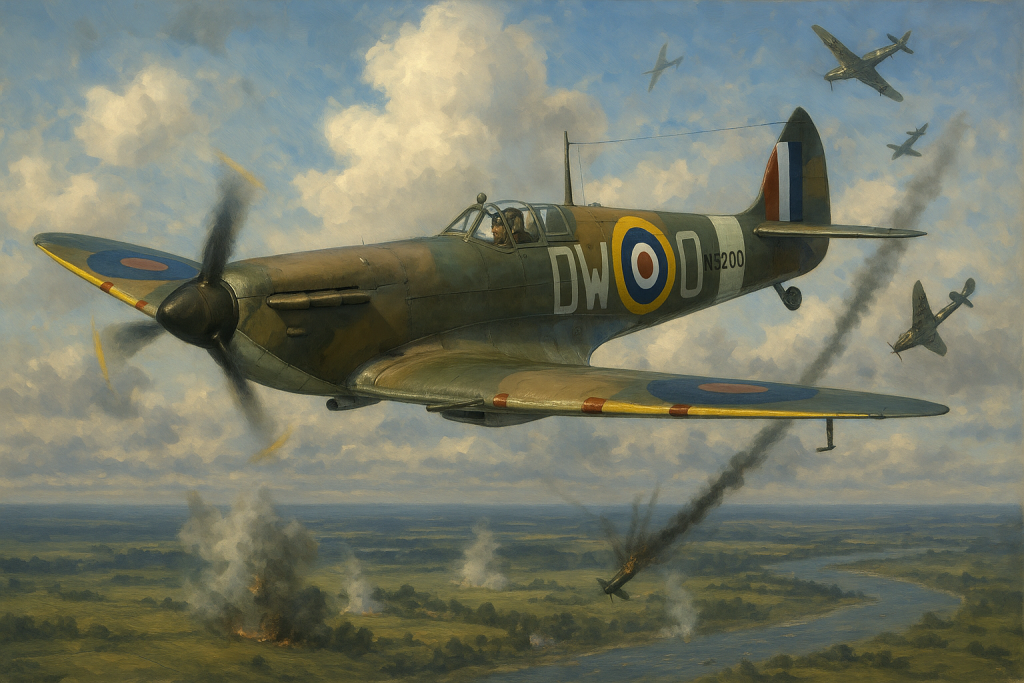The Spitfire: Birth of a British Aviation Icon

On March 5, 1936, the skies above Hampshire witnessed an event that would reshape the course of aviation and military history. From Eastleigh Aerodrome (now Southampton Airport), the prototype of the Supermarine Spitfire took flight for the very first time—ushering in a new era of fighter aircraft engineering. With its elegant design and formidable performance, the Spitfire would soon become a symbol of British resilience in the face of war.
The Iconic Sound
↓ Hear the iconic sound of a Spitfire fly past. Click Play Below ↓

A Revolutionary Aircraft Takes Flight
The Spitfire was the masterpiece of Reginald J. Mitchell, the chief designer at Supermarine Aviation Works, part of Vickers-Armstrongs. Drawing from his experience designing high-speed racing seaplanes for the Schneider Trophy, Mitchell applied the same aerodynamic brilliance to the creation of a revolutionary monoplane fighter.
Did You Know? The Spitfire’s elliptical wing design wasn’t just stylish—it reduced drag and improved lift, giving the aircraft a tighter turning radius and better performance at high speeds than many of its contemporaries.

On that historic afternoon, test pilot Captain Joseph “Mutt” Summers climbed into the cockpit of prototype K5054. The aircraft, powered by the Rolls-Royce Merlin engine, performed so well during the short eight-minute maiden flight that Summers famously declared, “I don’t want anything touched!“
From Prototype to Production
The promising performance of the Spitfire’s first flight quickly caught the attention of the British Air Ministry. Just three months later, on June 3, 1936, an order for 310 Spitfires was placed, beginning what would become one of the most celebrated production runs in military aviation.
↑ Click the circles 🔴 in the image above to find out more about each part of the Spitfires Design. ↑
Did You Know? Over 20,000 Spitfires were built between 1936 and 1948, making it the most produced British fighter aircraft of World War II.
Despite early production challenges, the first units reached RAF squadrons by 1938, positioning the Spitfire as a critical asset just as tensions in Europe escalated.
Defender of Britain’s Skies
The Battle of Britain in 1940 cemented the Spitfire’s place in legend. While the Hawker Hurricane bore the brunt of the fighting, the Spitfire was instrumental in duels with the Messerschmitt Bf 109, Germany’s top-tier fighter. Its superior speed, rate of climb, and maneuverability made it a favourite among pilots and a feared opponent in the sky.
Did You Know? The Spitfire’s wings were so thin and strong that eight .303 Browning machine guns were housed within—an innovative feature at the time.
Its agility and speed became not only a tactical advantage but also a psychological one, bolstering the morale of Allied forces and the British public alike.

A Versatile and Evolving Design
The Spitfire was never a static design. Instead, it evolved through over 20 major variants, adapting to every phase of the war. As roles shifted, so did the aircraft: from interceptor to photo reconnaissance, from air superiority fighter to carrier-based Seafire.
Did You Know? Some Spitfires were specially equipped with cameras instead of guns and flew unarmed reconnaissance missions, providing vital intelligence over occupied Europe.
Later models even incorporated the Rolls-Royce Griffon engine, pushing the aircraft to greater altitudes and speeds.
The Legacy Lives On
Even decades after the guns fell silent, the Spitfire remains one of the most recognisable and admired aircraft in the world. Dozens of airworthy Spitfires still grace airshows and commemorative events, their distinctive Merlin engine roar still sending chills down the spine of all who hear it.

Did You Know? The name “Spitfire” was suggested by Sir Robert McLean, the then-chairman of Vickers, who reportedly described his spirited daughter as a “little spitfire.”
From wartime hero to timeless icon, the Spitfire continues to represent the innovation, courage, and determination of an era defined by conflict and triumph.
The Supermarine Spitfire’s first flight was more than a test—it was the beginning of a legend. Its combination of engineering brilliance, combat performance, and enduring symbolism has made it one of the most admired aircraft in history. From its role in defending Britain’s skies during World War II to its continued presence at airshows and in the hearts of aviation enthusiasts, the Spitfire is a testament to innovation and bravery.
Celebrate 85 Years Since the Battle of Britain

2025 marks the 85th anniversary of the Battle of Britain—a defining moment in British history where the Spitfire played a heroic role. To commemorate this significant milestone, we invite you to explore our exclusive range of Spitfire commemoratives, honouring both the aircraft and the brave pilots who flew them.

Looking good coin mum collected them coin very nice will be order soon to go with her coin